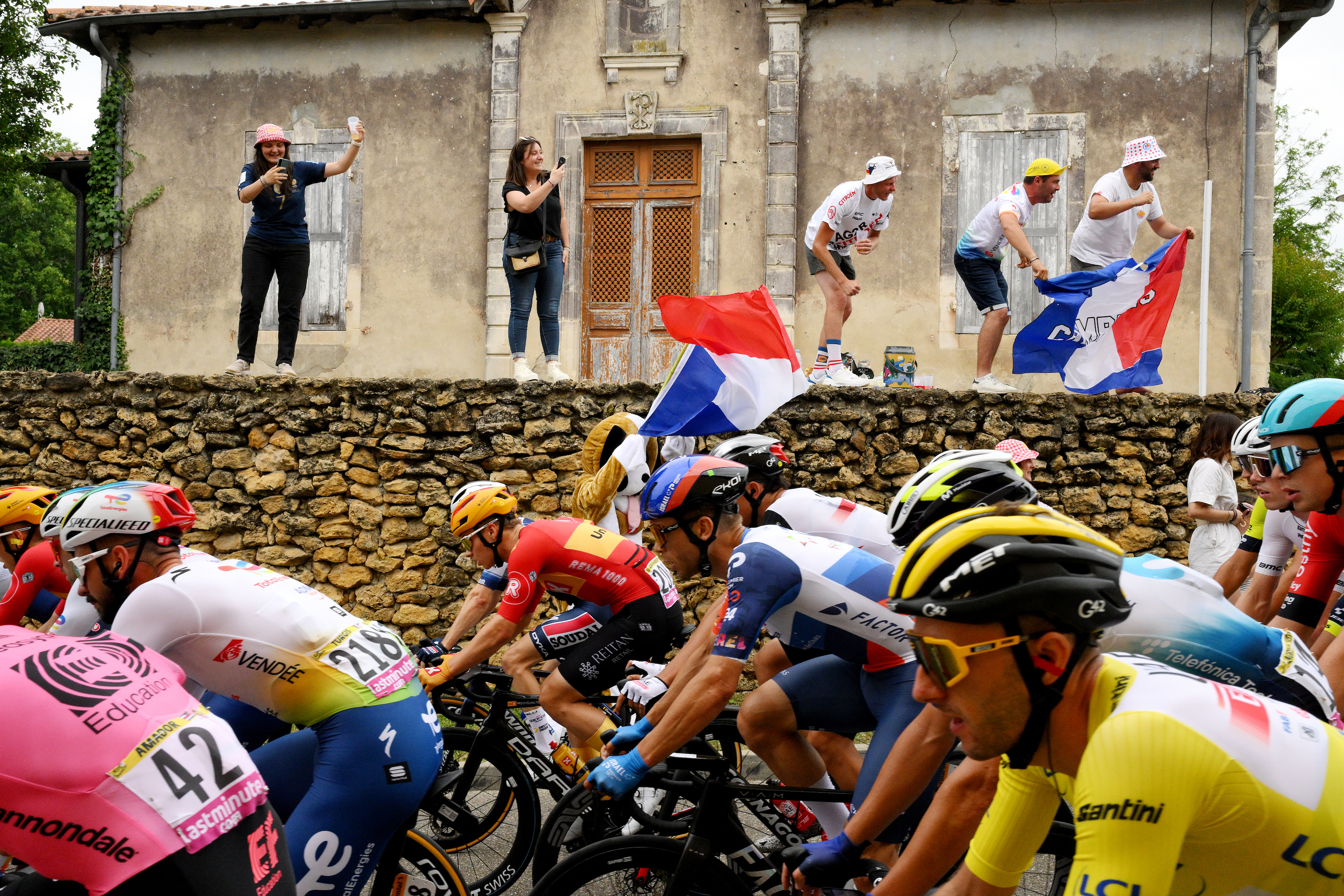Tour de France peloton split over continued use of downhill finishes
Stages 5, 14 and 17 all feature major descents towards finishes, and some riders want to see them out of racing


Rider safety, particularly on downhill finishes, was one of the topics du jour in the build-up to this year's Tour de France. Three stages feature major descents in the run in to the finish, with stage 14's run-in to Morzine, and stage 17 to Courchevel likely to be raced at speed.
All of this is happening after 26-year-old Gino Mäder died last month after crashing at high-speed on a descent at the Tour de Suisse, an event which brought safety issues to the forefront of everyone's mind
Speaking at a press conference in Bilbao ahead of the race, the Tour's director, Christian Prudhomme, said that Mäder's death was a "drama that we absolutely don't want to be repeated".
To that end, "new" safety initiatives will therefore be used at this year's race, where over 5,000 "dangerous spots" will be marked for the riders. The initiatives include noise-producing road signs, re-tarmacked roads and 30-metre-long safety mattresses, which will be installed on the descent of the Col de la Loze on stage 17.
However, not all the riders are impressed by the measures, with some wanting finishing descents taken out all together.
"I didn't see any new measures they added, from what I can tell," Movistar's Matteo Jorgenson said ahead of stage one. "They're talking a lot about safety, and I think that's good, that we talk about it, but I haven't seen any new measures particularly. Honestly, ASO races are much safer for me than other races, I always like racing them. The safety here is the same it has always been.
"I think they should take them [downhill finishes] away. We saw what happened a few weeks ago on one. It's a part of cycling, but one life lost is too much. We're all willing to take risks to win the race. If the route is planned that way, it puts us all in a bit of danger. I hope they would take those out, make them safer. I would prefer to finish on top of the climb.
The latest race content, interviews, features, reviews and expert buying guides, direct to your inbox!
Jorgenson crashed on the run-in to the line on stage 16 of last year's race to Foix, which also saw a finish down in a valley after a climb, similar circumstances to stages 5, 14 and 17 this year.
"There's always a guy who is slightly off the back over the top, or someone off the front," he continued. "I experienced it last year myself when you're in the position to win a stage, you'll take all the risks possible. I crashed on the downhill, it wasn't that bad for me, but it could have been if it was a slightly faster downhill. We're bike racers, and when you put a finish line at the bottom, we're going to go as fast as we possibly can."
This opinion was echoed my Michael Mørkøv (Soudal Quick-Step).
"I will never appreciate downhill finishes," he said. "Of course it's very dangerous because the closer you get the finish line you will push more to arrive first, and make a result. The higher speed you go the more dangerous it is. Especially, if you can fall over. It's dangerous, there have to be some safety changes with that."
However, the powers that be in cycling have already made it clear that descents, and downhill finishes, are going nowhere. It is true that banning them would make the job of race organisation - already a tough task - even more difficult.
David Lappartient, the UCI's president, said before the race: “We’re not going to stop descents like the one into Morzine on July 15 but they’ll be safer. The organisers will help us make the races safer. The climbs need to be safe but we can’t ban descents.”
Not all riders feel that they should be banned, but welcome measures to improve safety.
"It's a really interesting conversation, especially with what happened," Mike Teunissen of Intermarché-Circus-Wanty explained ahead of stage two. "It's a quality you need to have as a rider, so therefore I would say we shouldn't ban downhill finishes completely. On the other hand, I think the plans we are having, and the communication, is good. The conversations over whether it is good enough or safe, and how we could make it safer.
"I don't think we need to ban things, but to have the conversations is already crucial and beneficial. That's already something we didn't have for the past few years. That's already an improvement, and then we can make the right decisions."
Downhill finishes are not the only safety problem that organisers still need to work on, with Bora-Hansgrohe's Jordi Meeus highlighting downhill sprints.
"If you look at the history, the higher the speed, the more dangerous the sprints are," he said. "It's not only up to me, but I think with road furniture and the right barriers, we can save a lot of risks, but high speed sprints are a lot more dangerous."
On Wednesday's stage five, and then on stages 14 and 17, the organisers will hope that their new safety measures will help prevent major incidents, as well as riders knowing where the line between winning and safety is. Time will tell.

Adam is Cycling Weekly’s news editor – his greatest love is road racing but as long as he is cycling, he's happy. Before joining CW in 2021 he spent two years writing for Procycling. He's usually out and about on the roads of Bristol and its surrounds.
Before cycling took over his professional life, he covered ecclesiastical matters at the world’s largest Anglican newspaper and politics at Business Insider. Don't ask how that is related to riding bikes.